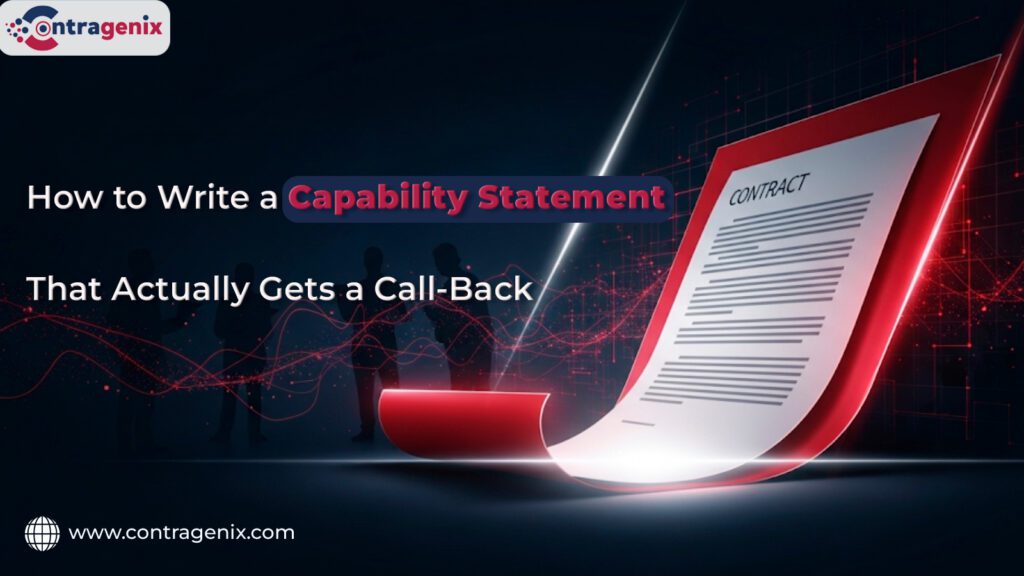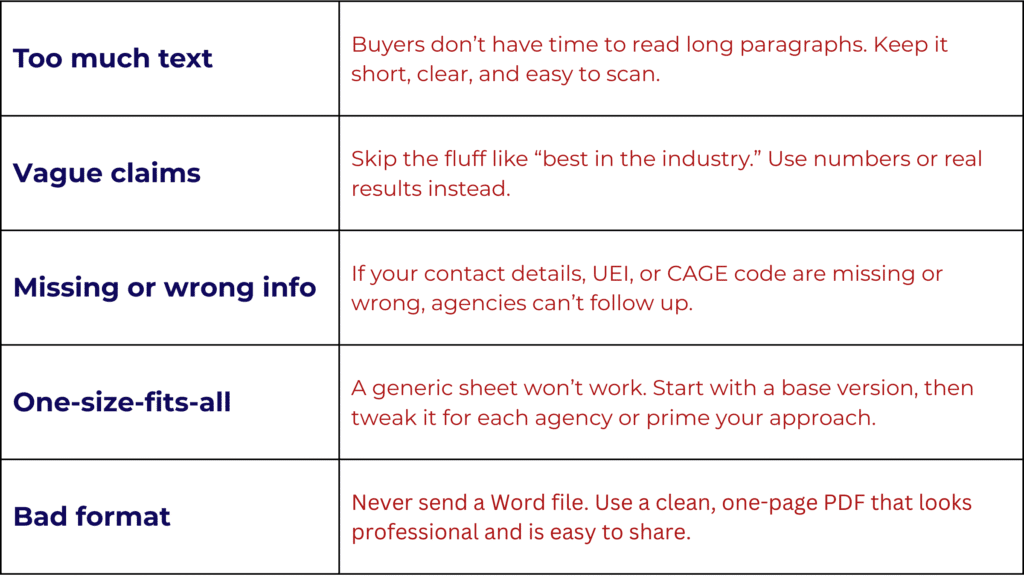How to Write a Capability Statement That Gets Call-Backs in Government Contracting

Introduction
How to write a capability statement is one of the first queries buyers and small businesses ask when they want to sell to the federal government. Question: would a single, well-crafted, one-page sheet make a buying official call you instead of scrolling past your firm? This blog explains clear, agency-friendly steps, a simple one-page layout, and practical tips to ensure your capability statement gets noticed—not ignored.
Why a Capability Statement Matters for Government Contracting
A capability statement is essentially your company’s one-page resume for government buyers and prime contractors. Agencies and PTACs( Procurement Technical Assistance Centers) expect a short document that instantly answers: what you do, who you’ve done it for, why you’re different, and how to contact you. Well-structured capability statements are considered a core procurement marketing asset by federal advisors and PTACs
The 5 Essential Sections
Most federal guides and PTACs say every capability statement should include these five key parts:
-
Core Competencies — Short bullet points showing what your company does best, matched to agency needs.
-
Past Performance — 1–2 examples of recent projects (add contract type or value if allowed).
-
Differentiators — What makes your business stand out from others.
-
Company Data — Details like UEI/CAGE, NAICS codes, SAM.gov status, and certifications.
-
Contact Information — Clear details: name, phone, email, website, and point of contact.
Step-by-Step: How to Write a Capability Statement

1. Core Competencies — Focus on the agency
-
Start with 1–2 sentences about what your company does and how it helps the agency’s mission or solves a problem.
-
Add 4–6 short bullet points (just a few words each) listing your main services or products.
-
Use NAICS codes and key phrases buyers search for. Keep it short and easy to scan.
2. Past Performance — Show proof quickly
-
List 2–3 recent and relevant projects.
-
For each project, include: customer name, contract type, year, value (if public), and the outcome.
-
If you have a reference, write “ref available upon request.”
-
Agencies care more about relevance than quantity.
3. Differentiators — What makes you different
-
Use short bullets to highlight your unique strengths: special processes, certifications, security clearances, location advantages, or proprietary tools.
-
Connect each point to a buyer benefit (saving time, cutting costs, reducing risks).
4. Company Data and Contact Info — Make it simple to reach you
-
Always include: business name, UEI, CAGE, DUNS (if used), NAICS, SAM.gov registration, and your business size/status (like small, HUBZone, VOSB).
-
Give one clear point of contact with phone and email.
-
Missing or unclear data is one of the top reasons capability statements get ignored.
5. Visual & Formatting Tips — Keep it clean
-
Stick to one page (two pages only if absolutely needed).
-
Use clear fonts, bullets, and white space.
-
Save it as a PDF—agencies and primes prefer this for emailing and printing.
-
Keep your logo small and your branding consistent.
-
PTACs and GSA both recommend a simple, well-designed one-page sheet as the first thing buyers look at.
Quick One-Page Capability Statement Template (layout)

Common Mistakes to Avoid
-
Too much text – Buyers don’t have time to read long paragraphs. Keep it short, clear, and easy to scan.
-
Vague claims – Skip the fluff like “best in the industry.” Use numbers or real results instead.
-
Missing or wrong info – If your contact details, UEI, or CAGE code are missing or wrong, agencies can’t follow up.
-
One-size-fits-all – A generic sheet won’t work. Start with a base version, then tweak it for each agency or prime your approach.
-
Bad format – Never send a Word file. Use a clean, one-page PDF that looks professional and is easy to share.
How to Use and Distribute Your Capability Statement
-
Email to decision makers as a one-page attachment with a short, personalized message.
-
Attach to responses and capability packages for RFI/BIDs when allowed.
-
Use at networking events, industry days, and prime contractor outreach.
-
Upload as a downloadable asset on your website and gate it to capture leads. PTACs recommend having both a concise “6-second capability statement” and an expanded version for deeper discussions.
Conclusion
A capability statement is the single most efficient document to get a federal buyer or prime contractor to call you. Keep it one page, agency-focused, factual, and easy to act on. Build a base template and customize it for each target agency that combination of clarity + relevance is what turns an introduction into a call-back.
Contragenix helps businesses to create clear, agency-ready capability statements that get noticed—not ignored. Whether you’re just starting with government contracting or refining your federal marketing toolkit, our team ensures your one-page sheet speaks the buyer’s language.
